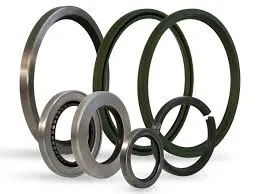10 月 . 17, 2024 04:18 Back to list
Hydraulic Oil Seals for Efficient Performance and Leak Prevention in Fluid Systems
Understanding Hydraulic Oil Seals Importance, Types, and Applications
Hydraulic oil seals are critical components in hydraulic systems, playing a vital role in ensuring the efficient operation of machinery and equipment. These seals prevent the leakage of hydraulic fluids, protect against contamination, and maintain pressure within the system. As such, understanding hydraulic oil seals is essential for anyone involved in industries that rely on hydraulic technology, such as construction, automotive, and manufacturing.
What is a Hydraulic Oil Seal?
A hydraulic oil seal, also known as a hydraulic seal or oil wiper, is designed to isolate two different areas within a hydraulic system. Typically made from various elastomers or polymers, these seals are engineered to withstand high pressures and temperatures while providing a barrier against the escape of hydraulic fluid. Their primary purpose is to maintain hydraulic fluid where it is needed, ensuring that the system operates efficiently.
Importance of Hydraulic Oil Seals
The importance of hydraulic oil seals cannot be overstated. If a seal fails, it can lead to several issues including fluid leakage, decreased efficiency, and environmental contamination. A loss of hydraulic fluid not only results in financial costs due to leakage but can also impair the function of hydraulic machinery, leading to costly downtimes and repairs. Additionally, the contamination of hydraulic fluid can cause extensive damage to hydraulic components, leading to more severe operational problems.
Types of Hydraulic Oil Seals
Hydraulic oil seals come in various designs to suit different applications. Some of the most common types include
1. Static Seals These seals are used in applications where there is no relative movement between the components they seal. They are typically found in flanges and housing covers.
hydraulic oil seal

2. Dynamic Seals Unlike static seals, dynamic seals are designed to handle movement between sealing surfaces. This includes rotary and reciprocating movements, commonly seen in hydraulic cylinders and pumps.
3. Lip Seals Lip seals, also known as shaft seals or radial lip seals, are particularly effective at retaining oil while keeping contaminants out. They are commonly used in rotating shafts.
4. O-Rings These are circular seals that can provide an effective sealing solution for both static and dynamic applications. O-rings are versatile and can be used in various sealing locations within hydraulic systems.
5. U-Cups and V-Rings These seals are designed for specific applications, often employed in situations where higher pressures are present. They provide excellent sealing performance, particularly in harsh environments.
Applications of Hydraulic Oil Seals
Hydraulic oil seals are employed across a wide range of industries and applications. In automotive applications, they are found in hydraulic brake systems, power steering systems, and automatic transmissions. In construction equipment, hydraulic oil seals are integral to excavators, loaders, and other heavy machinery that rely on hydraulic systems for operation. Manufacturing equipment also utilizes hydraulic seals to ensure reliability in pressing machines, forklifts, and conveyor systems.
Conclusion
In conclusion, hydraulic oil seals play a pivotal role in the functionality and reliability of hydraulic systems. Their ability to prevent fluid leakage, protect against contamination, and maintain system pressure is essential for the efficiency and longevity of hydraulic machinery. With various types available to suit different applications, selecting the right seal is crucial for ensuring optimal performance. As industries continue to advance and embrace more sophisticated hydraulic systems, the role of hydraulic oil seals will become increasingly significant, underscoring the need for quality components in maintaining operational excellence.